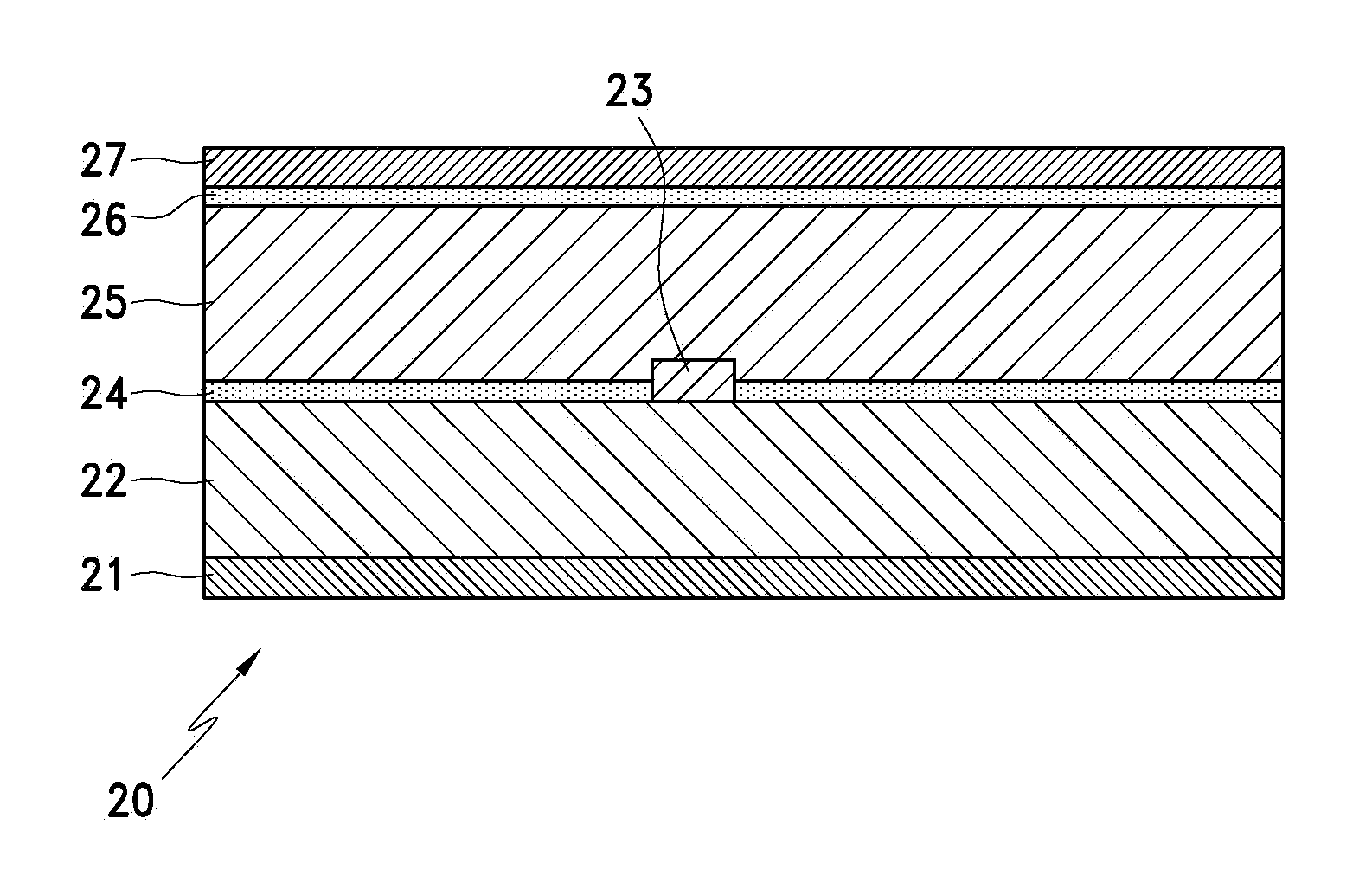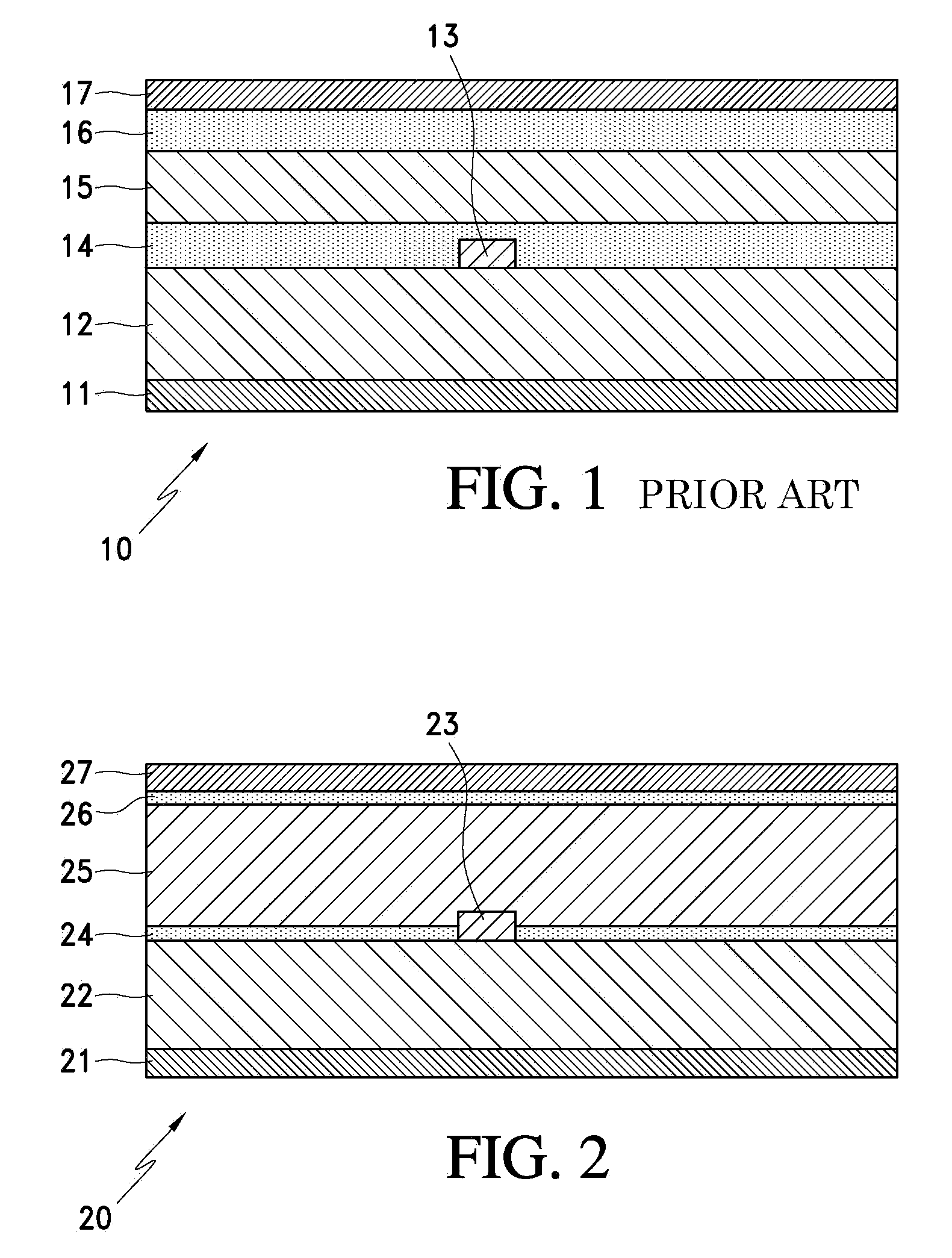Method of manufacturing a flexible printed circuit assembly
a printed circuit and assembly technology, applied in the direction of printed circuit manufacturing, printed circuit aspects, high frequency circuit adaptations, etc., can solve the problems of poor i/o density, high-performance coax or optical fiber, and traditional wire cables cannot meet the requirements of high-speed signal interconnection, etc., to reduce the overall thickness of the assembly, reduce the dielectric loss, and reduce the tangent of dielectric loss
- Summary
- Abstract
- Description
- Claims
- Application Information
AI Technical Summary
Benefits of technology
Problems solved by technology
Method used
Image
Examples
Embodiment Construction
[0016]The invention will now be described in more detail by way of example with reference to the embodiments shown in the accompanying figures. It should be kept in mind that the following described embodiments are only presented by way of example and should not be construed as limiting the inventive concept to any particular physical configuration.
[0017]Further, if used and unless otherwise stated, the terms “upper”, “lower”, “front”, “back”, “over”, “under”, and similar such terms are not to be construed as limiting the invention to a particular orientation. Instead, these terms are used only on a relative basis.
[0018]FIG. 2 is a schematic cross-sectional view of a flexible printed circuit assembly 20, according to an exemplary embodiment of the present invention. The flexible printed circuit assembly 20 may have a similar layer structure of the assembly 10, as shown in FIG. 1. Referring to FIG. 2, the flexible printed circuit assembly 20 includes a bottom ground layer 21, a first...
PUM
| Property | Measurement | Unit |
|---|---|---|
| flexible | aaaaa | aaaaa |
| thickness | aaaaa | aaaaa |
| adhesive | aaaaa | aaaaa |
Abstract
Description
Claims
Application Information
 Login to View More
Login to View More - R&D
- Intellectual Property
- Life Sciences
- Materials
- Tech Scout
- Unparalleled Data Quality
- Higher Quality Content
- 60% Fewer Hallucinations
Browse by: Latest US Patents, China's latest patents, Technical Efficacy Thesaurus, Application Domain, Technology Topic, Popular Technical Reports.
© 2025 PatSnap. All rights reserved.Legal|Privacy policy|Modern Slavery Act Transparency Statement|Sitemap|About US| Contact US: help@patsnap.com


